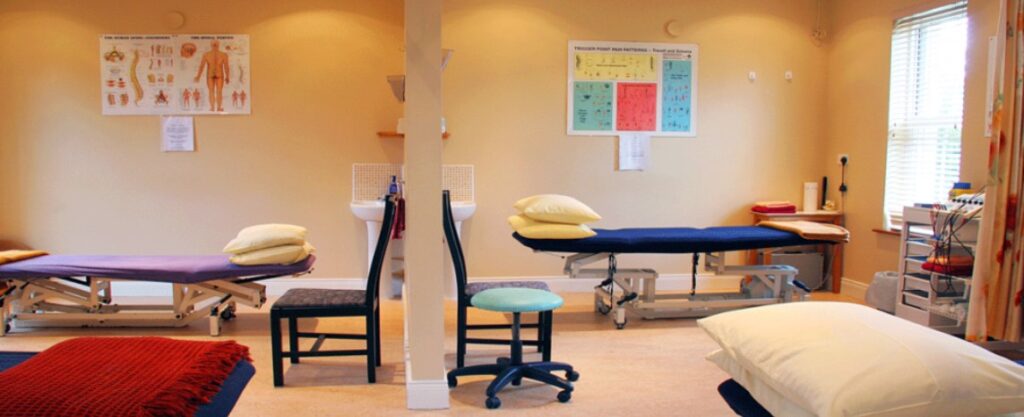Chronic Obstructive Pulmonary Disease (COPD) is a progressive lung disease that impacts breathing and overall quality of life. However, physiotherapy, often overlooked in respiratory care, is crucial in managing COPD symptoms. It involves techniques and exercises designed to enhance lung function and improve the daily lives of those affected. Let’s walk you through how COPD physiotherapy and pulmonary physiotherapy can be useful in treating COPD at clinics like ReLiva Physiotherapy.
What is COPD, and What is its Impact on Life?
COPD causes obstructed airflow from the lungs, leading to symptoms like breathing difficulty, cough, mucus production, and fatigue. Knowing its impact is very important in appreciating the benefits of targeted physiotherapy.
- Physical Limitations: Reduced lung function makes physical activity challenging, contributing to an almost no outside lifestyle.
- Emotional and Mental Health: Chronic breathlessness can lead to anxiety, depression, and social isolation.
- Quality of Life: Daily activities become more complicated, affecting life quality.
Goals of Physiotherapy in COPD Management
At clinics like ReLiva Physiotherapy, the goals of managing Chronic Obstructive Pulmonary Disease (COPD) through physiotherapy are multifaceted.
- Remove Excess Bronchial Secretions: Techniques to clear secretions and reduce airflow obstruction.
- Establish Coordinated Breathing: Training to develop an effective and coordinated breathing pattern.
- Promote Relaxation and Improve Posture: Techniques to enhance relaxation and correct posture for better breathing.
- Increase Mobility: Exercises to improve the mobility of the thorax, shoulder girdle, and neck.
- Increase Exercise Tolerance: Gradual increases in physical activity to build endurance.
- Encourage an Active Lifestyle: Support maintaining daily activities and overall well-being despite COPD challenges.
Core Physiotherapy Techniques for COPD
Effective physiotherapy for COPD includes several techniques customised to the individual’s symptoms and overall health condition, which include (but are not limited to):
- Breathing Exercises: Techniques like pursed-lip breathing that help control breathlessness and improve ventilation.
- Airway Clearance Techniques: Chest percussion, vibration, and postural drainage assist in mucus clearance.
- Exercise Training: Special exercise programs designed to improve cardiovascular fitness and muscle strength without overexertion.
Developing a COPD Physiotherapy Plan
Creating an effective physiotherapy plan for a COPD patient involves a comprehensive assessment and tailored interventions.
- Assessment of Patient’s Condition: Evaluation of lung function, physical capabilities, and lifestyle needs.
- Setting Realistic Goals: Set achievable health and mobility goals for the patient.
- Regular Monitoring and Adjustment: Ongoing assessment to fine-tune the therapy as the patient’s condition evolves.
Specific Exercises Recommended for COPD Patients
A physiotherapist may recommend a range of exercises for COPD patients to improve respiratory function and overall well-being.
- Postural Drainage (P.D.) involves positioning techniques to help clear lung secretions.
- Clapping and Shaking are used to loosen and mobilise these secretions, facilitating easier breathing.
- Breathing Exercises are crucial for enhancing respiratory efficiency and managing breathlessness.
- Posture Correction techniques help optimise chest relaxation, making breathing more effective.
- Thoracic Mobility Exercises aim to improve spinal and chest flexibility, preventing complications like kyphosis and enhancing lung expansion.
- Improving exercise tolerance while practising Breathing Control helps patients gradually increase their physical activity levels, which is essential for maintaining fitness and managing COPD symptoms.
These exercises collectively support better lung function, ease breathing difficulties, and enhance the quality of life for individuals with COPD.
The Role of Education in COPD Physiotherapy
Education is a cornerstone of effective COPD management, giving patients the knowledge to manage their condition proactively.
- Self-Management Techniques: Telling the patient the details of symptom management, medication adherence, and when to seek medical help.
- Lifestyle Modifications: Guidance on dietary changes and stress management techniques.
- Breathlessness Management: Teaching strategies to cope with and minimise episodes of breathlessness.
Integrating Physiotherapy into Daily Life for COPD Patients
For physiotherapy to be truly effective in managing COPD, patients must seamlessly incorporate the learned breathing techniques and physical exercises into their everyday routines. This regular practice not only helps to maintain continuity in therapy but also ensures the benefits of physiotherapy go beyond the clinical setting into real-world activities.
- Routine Incorporation: Setting specific times for exercises as part of daily activities. Consistency is key, and having a structured schedule helps build the exercise habit.
- Family and Caregiver Involvement: Training family members and primary caregivers to assist in exercises and recognise signs of symptom increase. This creates a supportive home environment that is important for ongoing care.
- Adaptation of Home Environment: Adjusting the living space to encourage activity and reduce hazards. This might include arranging furniture to create enough space for movement and placing essentials within easy reach to minimise strain.
- Regular Goal Setting: Establishing short-term and achievable daily or weekly progress goals can motivate patients and provide a sense of accomplishment, enhancing adherence to physiotherapy regimens.
- Use of Technology: Leveraging technology such as reminders on mobile devices or fitness trackers can help patients monitor their activity levels and respiratory function, ensuring they stay on track with their physiotherapy goals.
Challenges and Considerations in COPD Physiotherapy
While physiotherapy offers significant benefits for COPD management, some challenges and considerations must be addressed.
- Patient Compliance: Making sure patients follow their exercise and treatment plans.
- Adjustment of Exercises: Modifying exercises based on the patient’s day-to-day condition and response to treatment.
- Coordination with Other Healthcare Providers: Collaborating with doctors and other health professionals to provide a holistic approach to COPD management.
Physiotherapy plays an important role in managing COPD by improving breathing techniques, increasing physical activity levels, and enhancing the overall quality of life. Through special exercise programs, education, and continuous support, pulmonary physiotherapy equips COPD patients with the tools to lead a more active and fulfilling life despite their condition. As awareness and accessibility of such therapies increase, more individuals can benefit from these non-invasive methods to manage their symptoms and improve their daily lives.
